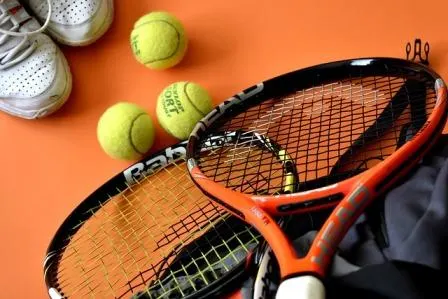
Having the best possible string setup can be the difference between winning and losing a match. To get the full potential of your strings, they need to be re-stringed regularly.
But, how long do tennis strings last? And how often should you restring a tennis racquet?
In another article I’ve looked at some of the ways you can tell if your tennis strings are dead, but over time it can be hard to spot some of the signs as any change is so gradual.
In this blog post, I’ll look at whether there is any concrete advice on how regularly you should change your racquet strings so you can maintain your level of tennis.
Essentially there are 6 main factors in determining how frequently you need to change them.
Let’s take a look…
How Often Do You Play?
This is obviously one of the main factors. If you play more often you’re going to need to restring your racquet more frequently as the strings will lose tension faster.
However, the number of times per week you play is not the biggest factor, it’s the number of hours.
For example, if you play three times a week for an hour compared to playing twice for 2 hours.
The second scenario involves more playing time and over the course of a tennis season, you’ll need to change the strings more often.
How well do you look after your tennis strings?
You might not think about this too much, but you should really aim to store your tennis racquet at room temperature when you’re not using it.
If you leave it somewhere really warm, like near a radiator, or somewhere very cold, the strings will warp and get weaker over time a lot faster.
What’s your tennis style?
a) The baseline player
If you like to play from the baseline a lot and take part in long rallies to wear your opponent down, like Novak Djokovic, you’re going to need to restring your racquet more often as you’re using your racquet more often.
Furthermore if you hit with a lot of heavy topspin, like Rafael Nadal, that’s also going to wear your strings out faster.
b) The serve and volley player
However, a serve and volley player likes to come to the net and finish off the point quickly, which means fewer shots per rally. They’re also more like to hit more flat shots, particularly for volleys. Both these factors should ensure tennis strings should last longer.
What type of string do you have, and what’s the string tension?
Monofilament vs Multifilament Tennis Strings
There are many different string types you can choose for your racquet, and some are more durable than others, but there are two main categories to think about; multifilament and monofilament fibers.
Multifliament fibers contain different strands that are put together to form a string. Hybrid strings would fall into this category. These type of strings are more likely to wear out quicker and break more often.
Monofilament fibers contain one large fiber which results in a stiffer and much more durable string
String Material
In terms of what material is used to create tennis strings, the weakest is natural gut, which will give you some great feel when you play, but it’ll wear out faster. Polyester is very strong and durable and will last you a long time.
Tennis Gauge
The thickness of the string (gauge) will also determine how often you’ll need to replace them. A gauge of around 18 is very thin, offer you great control and feel, but it will not last that long. A gauge of 15 will be a lot thicker, and be a lot more durable.
Here’s an article comparing different tennis gauges when choosing tennis strings.
What’s the string pattern on your racquet?
If the strings are closer together (e.g. a 16 x 19 pattern) the strings won’t move as much during impact and should last longer than a more open pattern (e.g. 16 x 15).

Conclusion
To be honest, this topic is something many recreational players don’t think about.
It’s more common to think about changing a tennis racquet, than changing a string, but you should really value both just the same.
In my opinion, along with some club pros I’ve talked to, I would aim to change your strings at least once a year, even if you don’t play that often.
Assuming you play less during the winter months, aim to change them around February/March time and that should last you until the autumn time.
Another tip I heard from my local club pro is to change your strings (per year) the same number of times you play per week, i.e change your strings 3 times if you play 3 times a week.
Obviously this doesn’t take into account many of the factors I’ve listed in this blog post, particularly on the number of hours per session, and your style of play, but as a general rule it seems ok.
For a better indication of when it’s time to change, try to look out for signs that you’re strings are losing a significant amount of tension.
Interesting fact – The tension in tennis racquet strings can drop by 10% within the first 24 hours after being restrung.
If you fail to spot a drop in tension, you can over compensate by hitting harder which can cause shoulder and elbow injuries.
On the other hand, if you change your strings too often, it’ll cost you a lot more and unless you know a place that restrings racquets quickly, it can be inconvenient having to wait several days for them to do it (like my local tennis club!)
